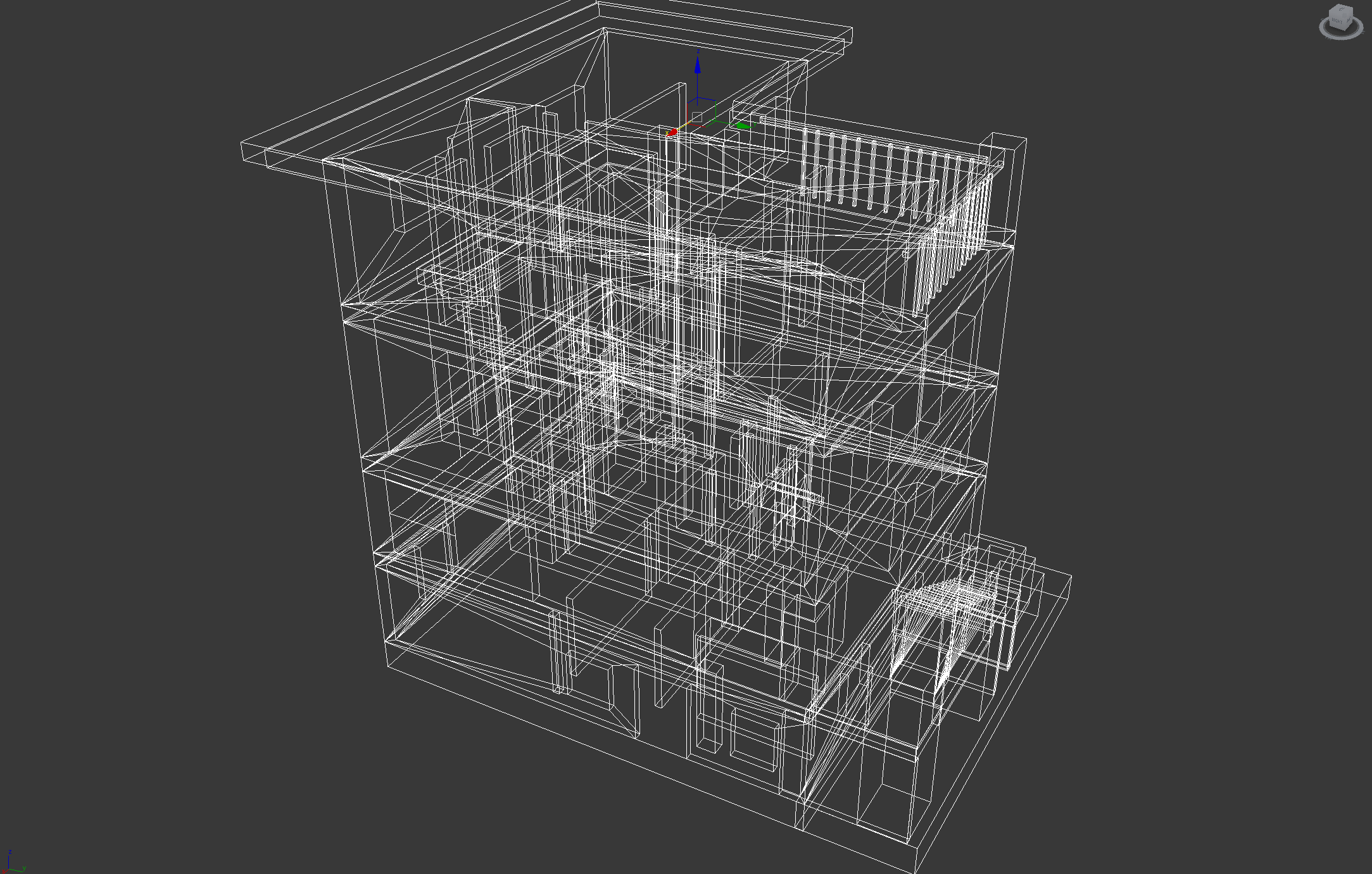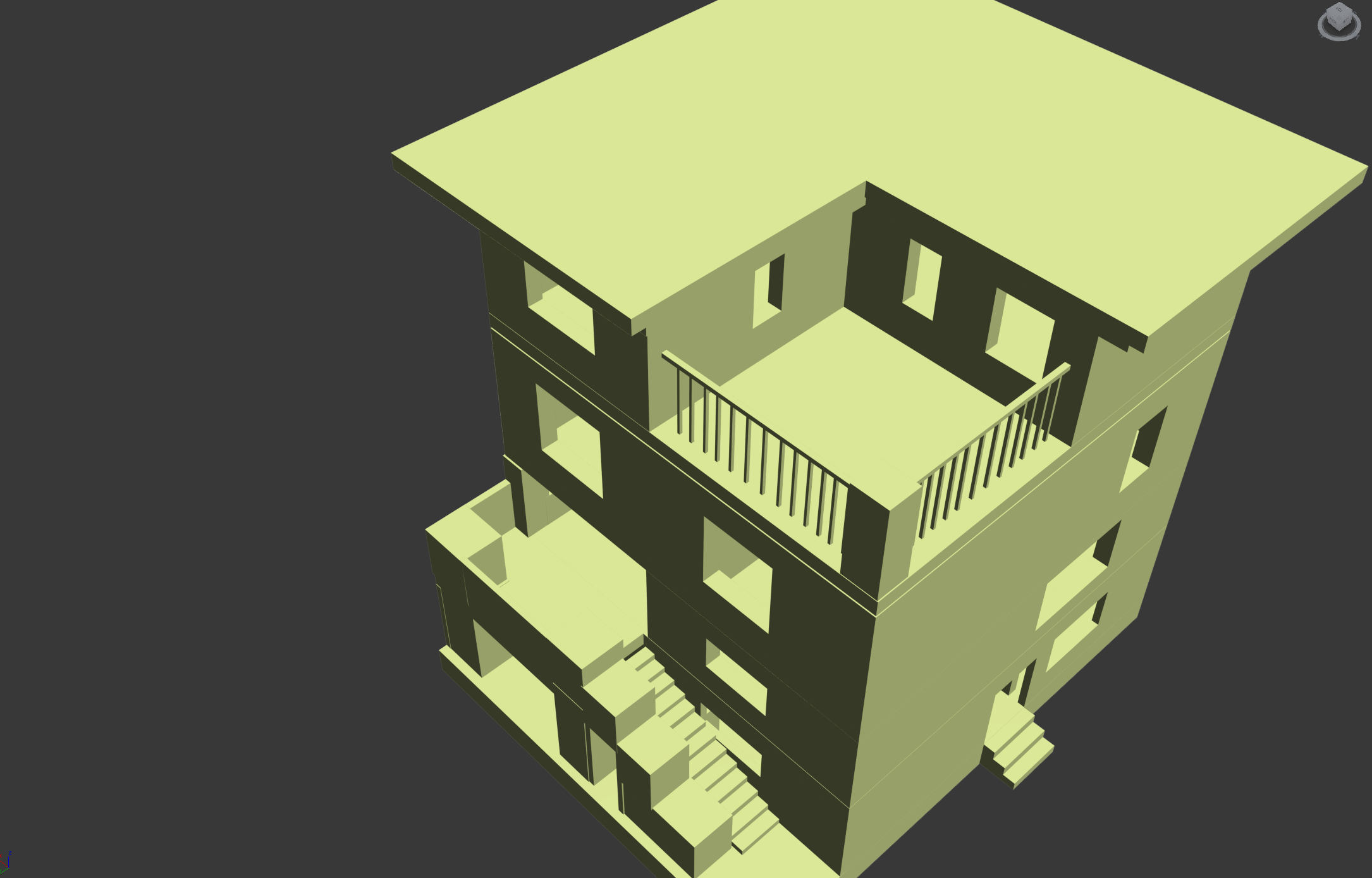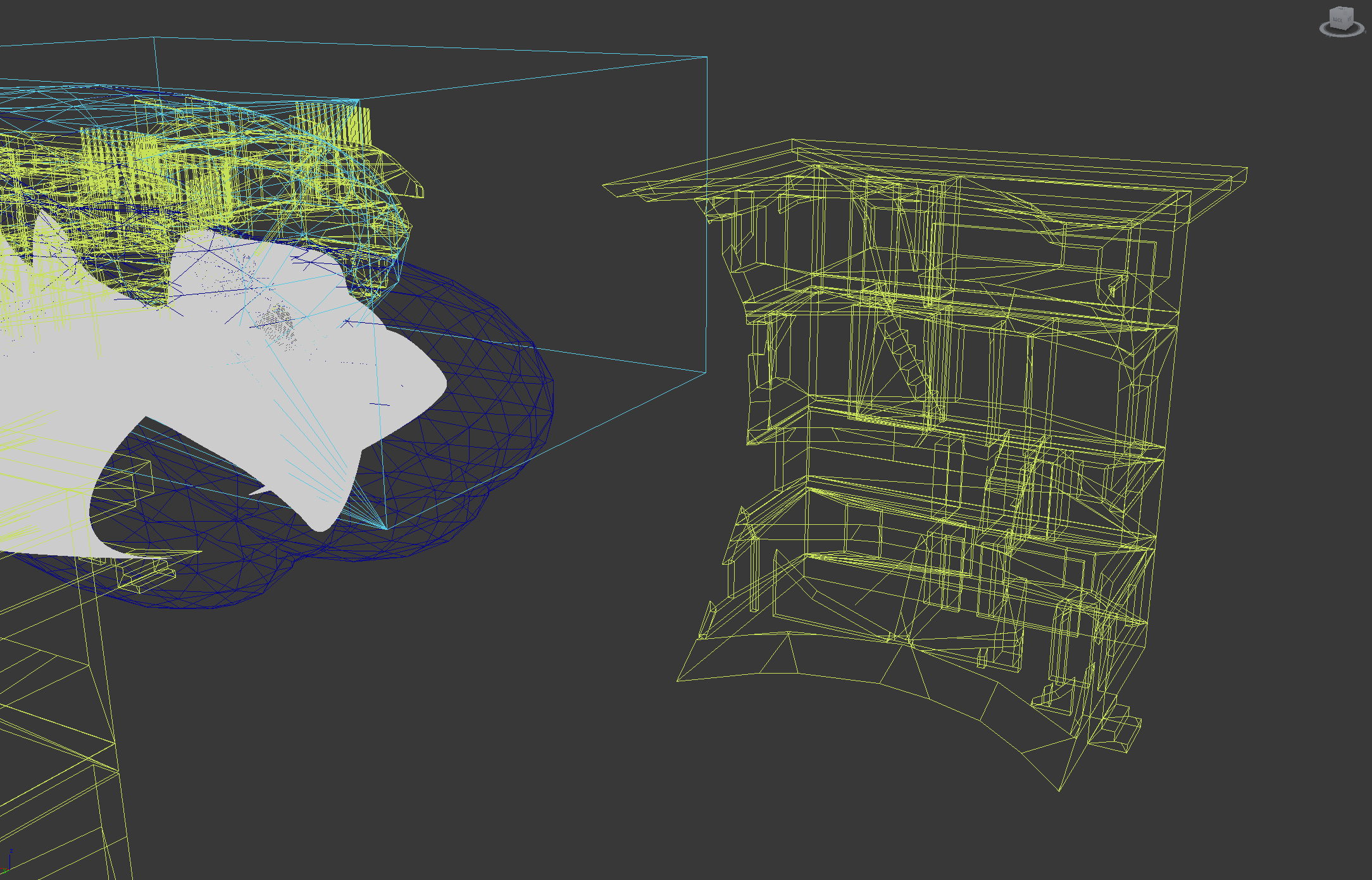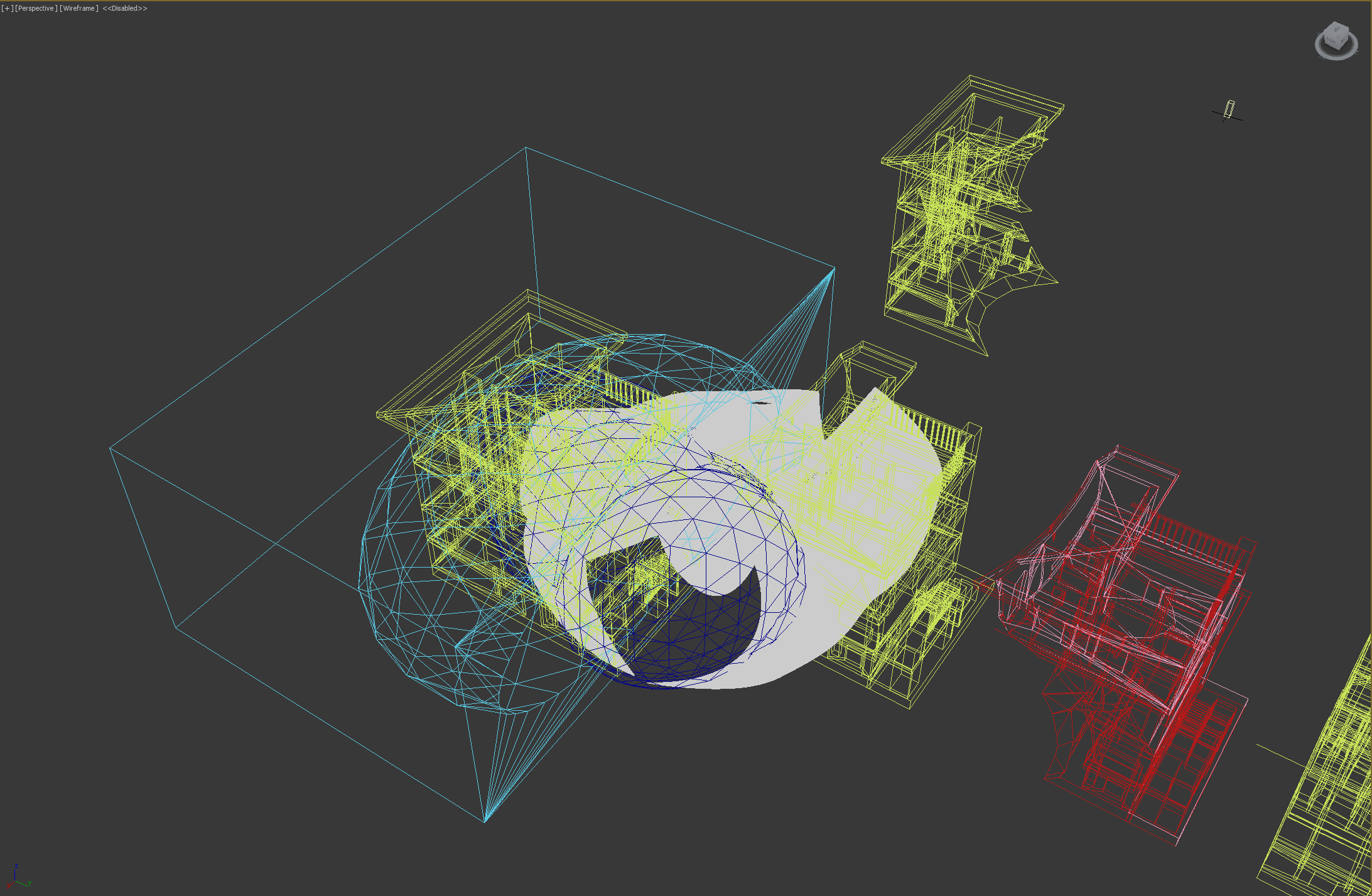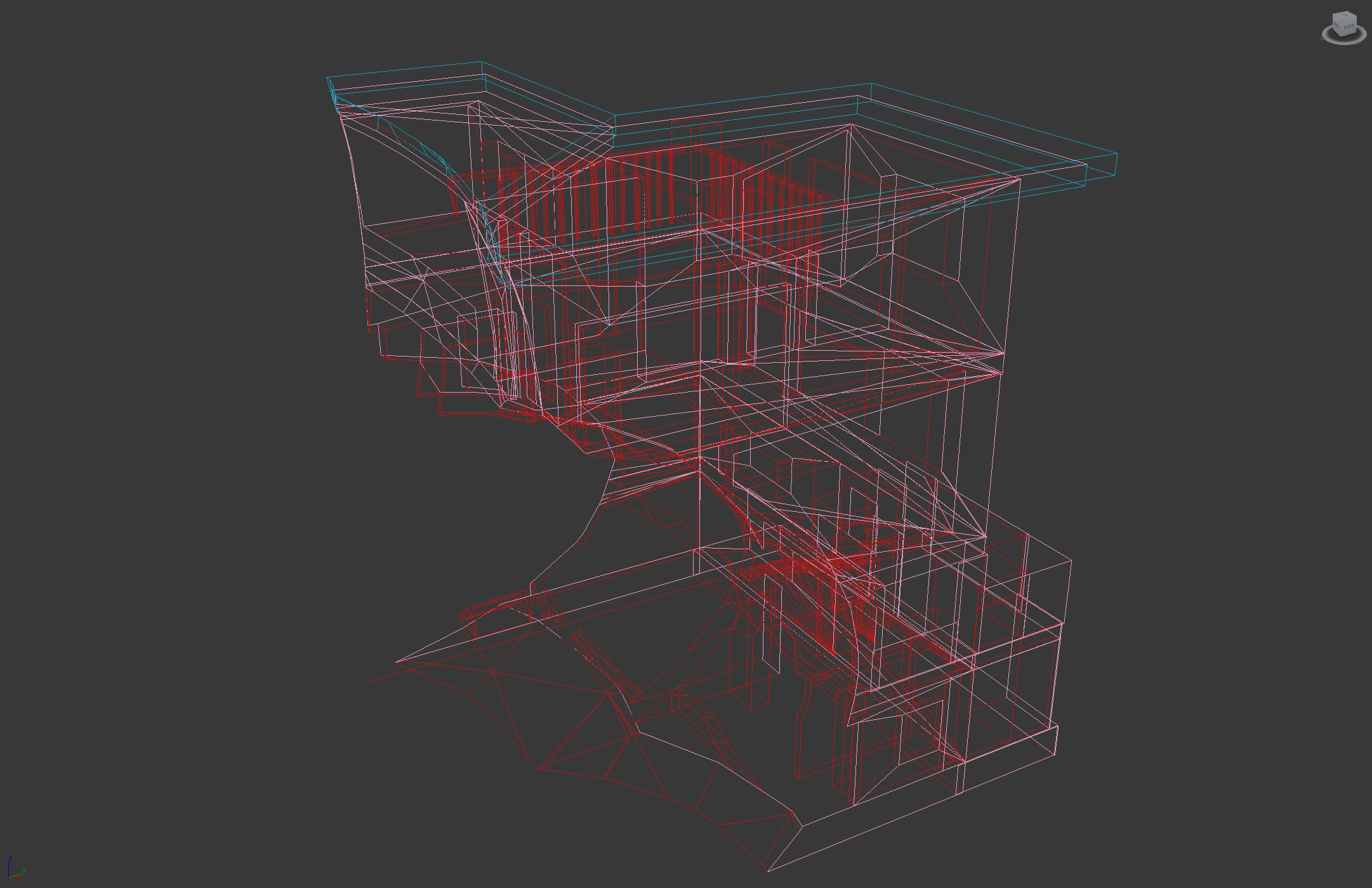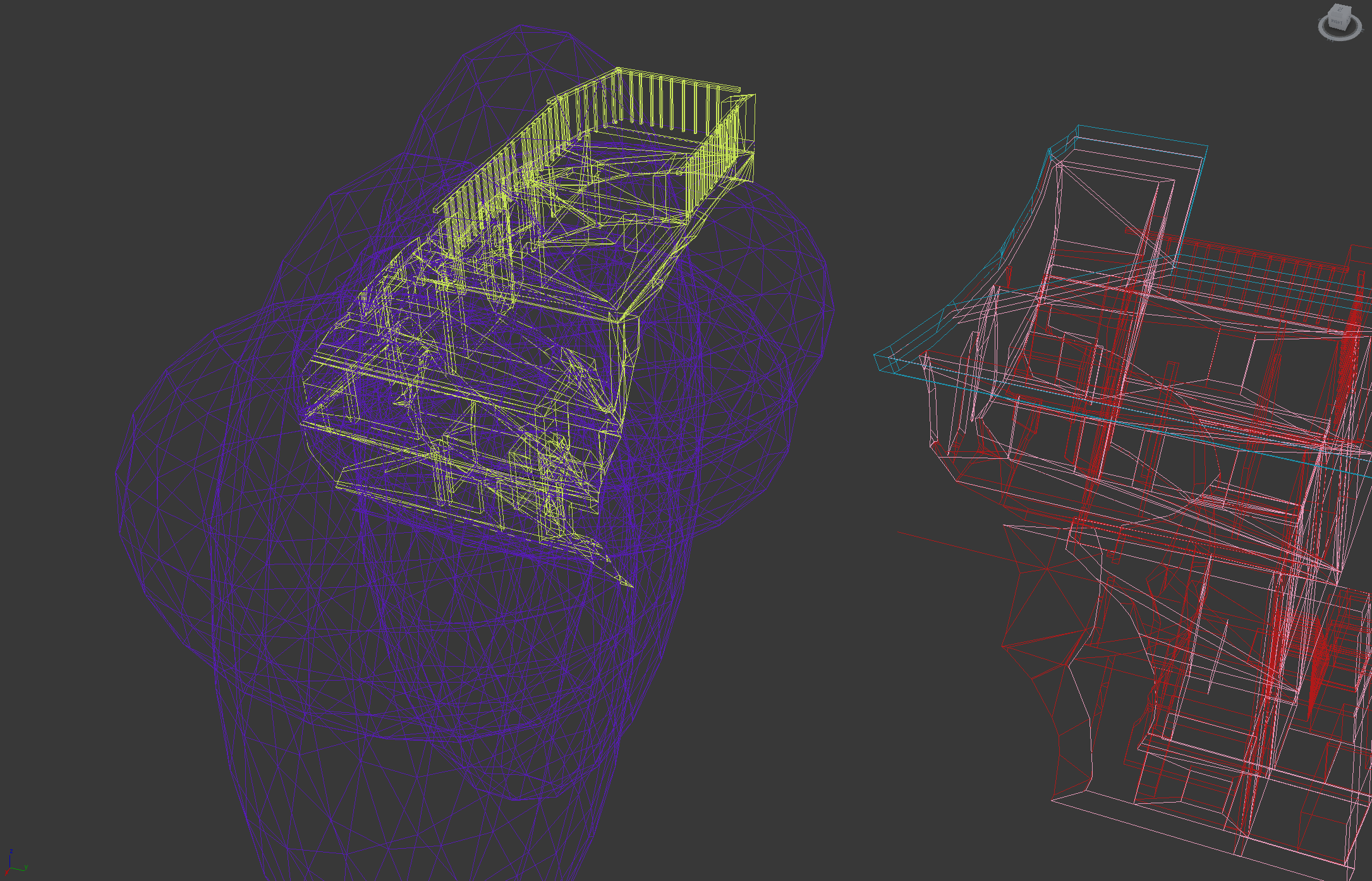PRECEDENT: Is the precedent architecture accurately modeled?
I chose Rufer Haus by Adolf Loos because of the simplistic exterior encasing a complex series of levels. The spaces themselves I felt are adequate for a small family once I finished modelling it and thus when cut/chopped and molded among the pavilion, it made sense to build and morph this building.
I chose Rufer Haus by Adolf Loos because of the simplistic exterior encasing a complex series of levels. The spaces themselves I felt are adequate for a small family once I finished modelling it and thus when cut/chopped and molded among the pavilion, it made sense to build and morph this building.
MODIFIED PRECEDENTS: Are the three modified precedents distinctive?
I made the pavilion the centre of attention for this project, which is where the homeless people would use the spaces as well as because the pavilion's central pathway is open to the general public. Therefore when modifying the precedents, I opted for extreme scenarios of gouging out the shape of the pavilion into the building and wrapping/continuing these forms throughout the design. This can be seen as I've incorporated not one, but two Rufer Haus's in different modifications that create a relationship not only within themselves (residence), but to continue that roundness of the pavilion as well.
This design started from simple chopping in half to rounder and more complex gouging negative forms.
Eventually I sketched out a couple of designs that I thought worked with the site and built on wards from here:
REFLECTING SITE CONDITIONS: Do the three modified precedents reflect the new site conditions?
MODIFIED PAVILION: Has the Pavilion been well modified with respect to the siting and geometric impact of the Residence?
01 - Realistic Rendering
02 - Conceptual Rendering
03 - Overhead / Site View
04 - Closeup detail perspective from balcony
05 - East Perspective
06 - Concrete material closeup
07 - Indoor / outdoor transparency between ground floor of residence and pavilion
OFFICIAL FIVE STILLS (Screen captures and editing)
01 - Overhead / Site View
02 - East Perspective
03 - Interior Perspective - Homeless Lockers
04 - Central Pathway Perspective
05 - Interior Perspective - waiting room
3 MINUTE FILM: Does the 3 minute short film, represent, or extend the scheme well?
My 3 minute video consists of a conceptual render of the final design. The Residence itself is opaque in the film and is only used as a reference for the physical space. Therefore realistic materials is only shown for the pavilion but the breathing effect of the pathway is used to emphasize disruption in Terminal Line Theory.
5062610_EmilyLeung_Phase3_CODE1240 from z5062610 on Vimeo
5062610_EmilyLeung_Phase3_CODE1240 from z5062610 on Vimeo.
Phase 3 Assignment: The Residence
Inclusive of Phase 1 + 2: The Site + The Pavilion
Created in 3dsMax, Rhinoceros, Grasshopper + Unreal Engine 4
Music by Mattia Cupelli 2015
©EmilyYanYiLeung2015



